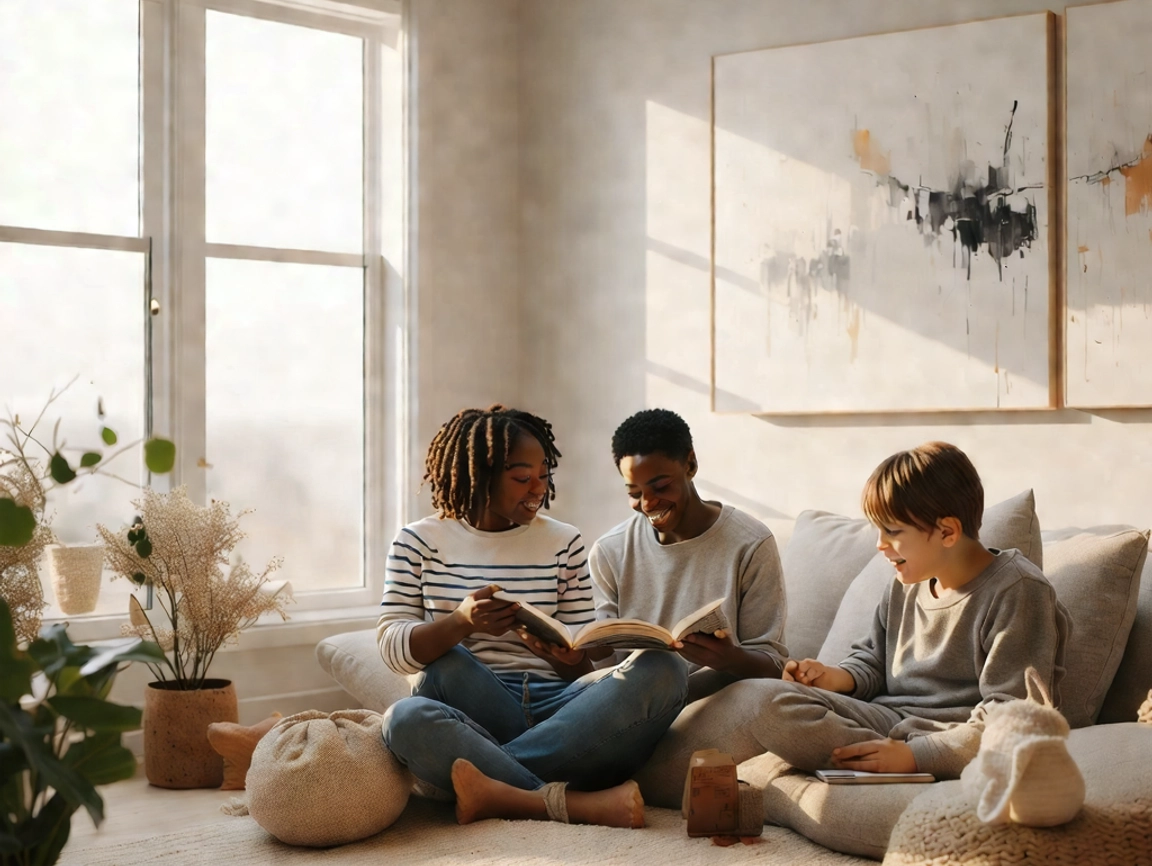In our hyper-connected digital age, it’s ironic that many of us feel more isolated than ever. As someone who’s navigated the complexities of online relationships, I’ve come to realize the importance of building genuine connections in a world dominated by screens and social media.
I’ve spent years exploring the delicate balance between digital convenience and authentic human interaction. Through trial and error, I’ve discovered strategies that can help bridge the gap between virtual and real-world connections. In this article, I’ll share my insights on fostering meaningful relationships in our increasingly digital landscape, without sacrificing the convenience and reach that technology offers.
The Challenges of Connection in the Digital Age
In my experience, navigating relationships in our hyper-connected world presents unique obstacles. Despite the abundance of digital communication tools, forging genuine connections often proves more difficult than ever before.
Information Overload and Shallow Interactions
I’ve observed that the constant stream of notifications, messages, and updates leads to information overload. This deluge of data makes it challenging to focus on meaningful conversations. Instead of deep, substantive exchanges, I often find myself engaging in quick, superficial interactions:
- Liking posts without reading them thoroughly
- Sending brief emoji responses instead of thoughtful replies
- Skimming through messages rather than absorbing their content
This pattern of shallow engagement hampers the development of real connections, as it’s difficult to truly understand and empathize with others when interactions are so fleeting (https://en.wikipedia.org/wiki/Information_overload).
The Illusion of Connectivity
While social media platforms boast millions of users, I’ve realized that this vast network doesn’t necessarily translate to genuine relationships. The illusion of connectivity often masks a deeper sense of isolation:
- Large friend lists filled with acquaintances I rarely interact with
- Constant exposure to curated highlight reels of others’ lives
- Difficulty in discerning authentic connections from superficial ones
This false sense of connection can lead to:
| Issue | Impact |
|---|---|
| Social comparison | Increased feelings of inadequacy |
| Fear of missing out (FOMO) | Anxiety and constant need to stay connected |
| Reduced face-to-face interactions | Diminished social skills and empathy |
I’ve found that while digital platforms offer unprecedented access to others, they don’t inherently foster the depth and authenticity required for meaningful relationships. Overcoming these challenges requires intentional effort to move beyond surface-level interactions and create spaces for genuine connection in the digital realm.
Redefining Relationships in a Virtual Space
In our digital age, I’ve found that redefining relationships requires a shift in how we approach online interactions. It’s about creating depth and authenticity in a space often characterized by superficiality and transient connections.
Quality Over Quantity in Online Connections
I’ve learned that cultivating fewer, more meaningful online relationships trumps amassing a large network of shallow connections. By focusing on quality, I’ve built a core group of digital friends who offer genuine support and enriching conversations. This approach involves:
- Engaging: Commenting thoughtfully on posts rather than just liking
- Listening: Paying attention to others’ life events and following up
- Sharing: Opening up about personal experiences to foster trust
- Consistency: Maintaining regular contact with key connections
Leveraging Technology for Meaningful Interactions
Technology offers tools to enhance our relationships when used intentionally. I’ve discovered several ways to leverage digital platforms for deeper connections:
- Video calls: Using face-to-face conversations for nuanced communication
- Collaborative apps: Working on shared projects to bond over common interests
- Digital gift-giving: Sending e-books or playlist recommendations to show thoughtfulness
- Virtual events: Attending online workshops or concerts together for shared experiences
By reimagining how we use digital spaces, we can create relationships that are just as rich and fulfilling as those formed in person. The key lies in approaching virtual interactions with intention and authenticity.
Strategies for Authentic Digital Communication
I’ve discovered several effective strategies for fostering genuine connections in digital spaces. These approaches prioritize authenticity and depth, transforming virtual interactions into meaningful relationships.
Active Listening in Text-Based Conversations
Active listening in text-based conversations involves more than just reading messages. I’ve found that paraphrasing key points, asking clarifying questions, and acknowledging emotions expressed in text lead to deeper understanding. For example, responding with “It sounds like you’re feeling frustrated about…” shows empathy and encourages further sharing. I also make it a habit to avoid interrupting with my own thoughts, giving the other person space to fully express themselves before responding.
Embracing Video Calls for Face-to-Face Connections
Video calls offer a richer communication experience than text alone. I’ve learned to leverage this medium by maintaining eye contact with the camera, using expressive body language, and creating a distraction-free environment. Scheduling regular video catch-ups with friends and colleagues helps maintain a sense of personal connection. I also find that sharing my screen during collaborative work or showing objects from my surroundings during personal calls adds depth to our interactions, making them feel more like in-person meetings.
Balancing Online and Offline Relationships
I’ve learned that maintaining a healthy equilibrium between digital connections and face-to-face interactions is crucial for building authentic relationships. Here’s how I achieve this balance:
Creating Digital-Free Zones in Daily Life
I’ve established specific times and spaces where digital devices are off-limits. This includes:
- Meal times: I keep my phone away during meals, focusing on conversations with family or friends.
- Bedroom: I’ve made my bedroom a no-phone zone, promoting better sleep and personal time.
- Nature outings: When hiking or at the beach, I leave my devices behind to fully immerse in the environment.
- Social gatherings: I encourage device-free meetups, fostering deeper in-person connections.
By creating these digital-free zones, I’ve noticed a significant improvement in the quality of my offline interactions and personal well-being.
Translating Online Connections to Real-World Meetups
I’ve developed strategies to transform virtual connections into meaningful offline relationships:
- Local online communities: I join groups based on shared interests in my area, facilitating easier transitions to in-person meetups.
- Virtual events with local components: I participate in online events that include regional breakout sessions or local gatherings.
- Social media location features: I use location-based features to discover nearby connections and suggest meetups.
- Collaborative projects: I initiate or join projects that require both online coordination and offline collaboration.
These approaches have helped me bridge the gap between my digital and physical social circles, creating a more integrated and fulfilling social life.
Fostering Empathy and Understanding in Digital Spaces
In my experience, fostering empathy and understanding in digital spaces is crucial for building real connections. I’ve discovered that by embracing vulnerability and nurturing supportive communities, we can create a more empathetic online environment.
The Power of Vulnerable Online Sharing
I’ve found that sharing vulnerably online can forge deeper connections. By opening up about my struggles, I’ve created opportunities for others to relate and offer support. This approach has led to more meaningful interactions, as people respond with empathy when they see authenticity. I’ve seen conversations shift from surface-level exchanges to heartfelt discussions about shared experiences. Vulnerable sharing also helps break down the curated personas often presented on social media, allowing for more genuine connections.
Cultivating Supportive Online Communities
I’ve learned that cultivating supportive online communities is essential for fostering empathy in digital spaces. I’ve joined and created groups centered around shared interests or experiences, which provide safe spaces for open dialogue. These communities often have guidelines that promote respectful communication and mutual support. I’ve witnessed how members rally around each other during difficult times, offering encouragement and practical help. By actively participating and moderating these spaces, I’ve helped create environments where empathy flourishes, and members feel truly understood and valued.
My conclusion
Navigating relationships in our digital world presents unique challenges but also incredible opportunities. By approaching our online interactions with intention authenticity and empathy we can forge meaningful connections that transcend screens. It’s about quality over quantity leveraging technology thoughtfully and balancing our digital and offline lives.
I’ve found that fostering genuine connections in the digital age requires effort and mindfulness. But the rewards are immeasurable. As we continue to evolve in this interconnected landscape let’s strive to create a digital world where real human connection thrives. With conscious effort we can build a future where technology enhances rather than hinders our relationships.



